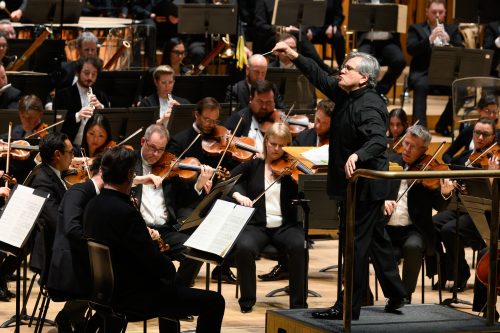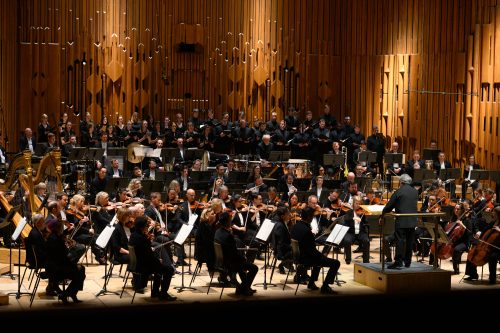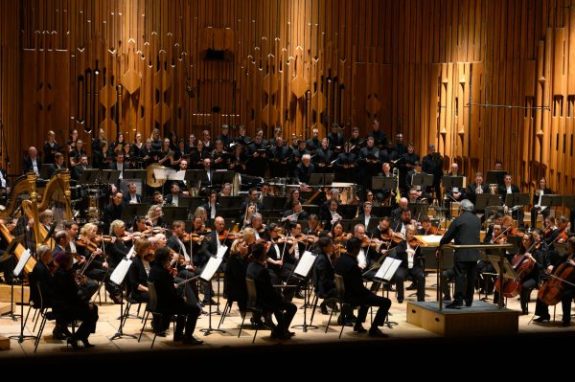 United Kingdom Ravel: Tenebrae, London Symphony Orchestra / Sir Antonio Pappano (conductor). Barbican Hall, London. 16.4.2024. (CSa)
United Kingdom Ravel: Tenebrae, London Symphony Orchestra / Sir Antonio Pappano (conductor). Barbican Hall, London. 16.4.2024. (CSa)

Ravel – Daphnis and Chloé
It had been a tiring twelve hours for Sir Antonio Pappano, the London Symphony Orchestra’s Chief Conductor elect, when he stepped onto the rostrum of the Barbican Hall for the first ‘Half Six Fix’ of the season. After a firm downbeat from the maestro and approximately twenty shimmering bars from the middle section of Daphnis and Chloé, he turned towards the audience to introduce them to the intricacies of Ravel’s full ballet or, as the composer described it, his symphonie chorégraphique, a pastoral romance set in ancient Greece, it recounts the myth of two foundlings brought up by shepherds who fall in love, are kidnapped and later reunited. Ravel’s musical setting of this story is one of the of the most wondrous and delicately coloured orchestral works in all of twentieth-century music.
‘Written in 2012…whoops…1912’ said Pappano before immediately correcting himself, adding ‘It’s been a long day’. Indeed, it had. That morning, he had delivered a hard-hitting speech to mark the opening of the LSO’s new season, in which he had criticised shameful funding cuts across the arts. ‘It’s not the LSO’s responsibility to educate children’, he complained, ‘It’s the Government’s job’. That said, Pappano is a natural born teacher. Before embarking on the full performance, he provided a helpful and entertaining outline of the ballet plot which even the youngest concertgoers (and there were a good number present) could follow. In a further innovative break from conventional concert presentation, and one intended to bring performers and concertgoers together, a rolling synopsis and close-up images of the musicians as they played were beamed up on large screens placed on either side of the platform.

Pappano’s talent for conveying the underlying message of the music and connecting with the audience could not of course have been so successful without a spectacular performance from the large assembly of musicians and a wordless chorus. The full forces of the virtuoso orchestra (some 103 players), backed by the choir Tenebrae, gave a gorgeous, and at times, magical account. Sweeping strings, gossamer harps, exquisite woodwind, softly burnished or sometimes ferocious brass and pinpoint precise percussion, which included an aeoliphone (wind machine), perfectly captured Ravel’s sensuous musical dreamscape and combined to entice and delight. Pappano’s searching baton drew a rich sonority from each section and his carefully calibrated direction ensured that timings and tonal balance were perfect. From the primal, swelling Introduction and Religious Dance to the eerie Slow and Mysterious Dance of the Nymphs at the end of Part 1, the players and singers conjured an atmosphere of mysterious serenity. A fevered War Dance in Part 2 raised the pulse while the evocations of sunrise and warbling birdsong at the beginning of Part 3 were simply ravishing. A hypnotic Pantomime and blissful flute solo (the outstanding Gareth Davies) preceded a riotous bacchanalia which brought this outstanding musical event to a close and proved a short but powerful fix to end the day and start the evening.
Chris Sallon
